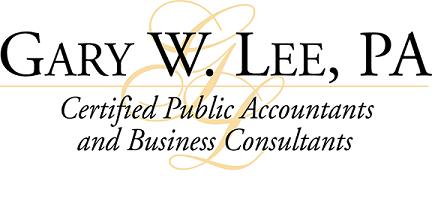Business
01/02/19
IRS mileage rates have changed for 2019 - read up on the increase here: https://bit.ly/2s7OpUc
Let us know if you have any questions!
11/29/18

The rules from the Tax Cuts and Jobs Act of 2017 (TCJA) kick in for 2018 and will affect almost every business in the best country in the world… the United States of America! Here’s a quick recap of the new rules. If more detail is desired, please give us a call so we can dive in to the nitty-gritty.
New Business-Related Tax Rules for 2018
Section 179 Deduction. For 2018, $1,000,000 of qualifying property can be written off. The qualifying property is reduced, but not below zero, by the amount of the cost that exceeds $2,500,000.
Bonus Depreciation. What was scheduled to end in 2019, has been extended and enhanced. The 50% depreciation that was previously allowed for first-year property has increased to 100% for property placed in service after Sept. 27, 2017, and before Jan. 1, 2023. Beginning after 2022, the 100% allowance is phased down by 20% per calendar year. Also, bonus depreciation can be applied to purchases of used as well as new items as long as the taxpayer has not utilized it prior to acquisition.
Additional Depreciation on “Luxury” Automobiles and Certain Personal Use Property. Depreciation limits for certain listed property has been increased. Vehicles less than 6,000 lbs., placed in service after 2017, can now deduct an additional $8,000 of depreciation, allowing a write-off for the first year of $18,000 subject to business use percentage. Also, computers and/or peripheral equipment has been removed from the definition of “listed property” and is no longer subject to the substantiation requirements that apply to other listed property.
New Deduction for Qualified Business Income. You may think this new deduction is fake news, but it’s not! If you are a sole proprietor, a partner in a partnership, a member in an LLC taxed as a partnership, or a shareholder in an S-Corp, you may be able to take a deduction from your Qualified Business Income (QBI). Although restrictions do apply, the deduction is 20% of QBI from a qualified trade or business. If your taxable income is less than $157,000 ($315,000 for joint filers) than your business qualifies. If your taxable income is above that threshold and your business is a “specified service trade or business”, then the deduction will phase out. In short, a specified service trade or business is any trade or business where the principal asset of such trade or business is the reputation or skill of one or more of its employees, i.e. health, law, accounting, consulting, performing arts etc. There are also limitations that involve W-2 wages. The deduction is the lesser of: (1) 20% of the taxpayer’s QBI or (2) the greater of: (a) 50% of the W-2 wages or (b) the sum of 25% of the W-2 wages and 2.5% of the unadjusted basis, immediately after acquisition of all qualified property. Trusts and estates are also eligible. Finally, this deduction can be taken regardless of whether a taxpayer itemizes or uses the standard deduction!
Changes in Accounting Method Rules. The number of businesses eligible to use the cash method of accounting has been expanded considering a gross receipts test is satisfied. Businesses with annual average gross receipts that do not exceed $25 million for the three prior tax-year periods are allowed. The same $25 million threshold allows for exemption from the uniform capitalization rules, exemption from inventories, and exemption from Percentage Completion for long-term contracts. Give us a call if you’re interested in learning about how these changes may benefit your business.
Carryover of Business Losses is Now Limited. Beginning in 2018, excess business losses for a noncorporate taxpayer are not allowed in the current year. The loss from a non-passive activity is limited to $500,000 (married filing jointly) or $250,000 (other taxpayers). Any amounts exceeding the threshold will have to be carried forward.
New Interest Deduction Limitations. There is a new limitation on the deduction of interest expense. The deduction for business interest is limited to the sum of business interest income plus 30% of adjusted taxable income for the tax year. There is, however, exemption from this rule if gross receipts do not exceed the $25 million. Also, certain businesses do not apply to the limitations. Call us to discuss in more detail.
Elimination of Entertainment Deduction. This one was instated to penalize those who simply just like to party. Less party, more business! Fortunately, a business may still generally deduct 50% of the food and beverage expenses, but if it’s combined with that fun sporting event, the meal portion needs to be separately stated and the “entertainment” can no longer be deducted. Separate general ledger accounts, one for Meals and one for Entertainment, should be set up to track those expenses. Be sure to save and make notes on your receipts!
Employer Credit for Paid Family and Medical Leave. A business credit is now available equal to 12.5% of the amount of wages paid to qualifying employees during any period in which such employees are on family and medical leave if the rate of payment is 50% of the wages normally paid to an employee.
Changes to Partnership Rules. Gain or loss from the sale or exchange of a partnership interest is treated as if the transferor in the partnership had effectively sold its assets at fair market value. A hypothetical gain or loss is allocated to interests in the partnership in the same manner as non-separately stated income and loss. Also, the rule for providing technical terminations of partnerships has been repealed making partnership interest transfers simpler. Other changes have been made that are beyond the scope of this letter.
Sound overwhelming? Don't let it. WE are here to help YOU.
11/15/18

Potential Retirement Plan enhancements working its way through Congress.
Definitely something to keep your eye on at the end of 2018. Contact us if you have questions - WE are here for YOU!
https://www.irahelp.com/slottreport/retirement-enhancement-and-savings-act-2018-resa
10/23/18
With the passing of the Tax Cuts and Jobs Act, this means new tax rules. One of them is that your entertainment expenses will no longer be a deductible expense. No more sports tickets to woo a potential client, as an example. The most confusing aspect of this change was that the meals portion was also disallowed; maybe. After 10 months into the New Year, the IRS has now cleared up the confusion. https://www.irs.gov/pub/irs-drop/n-18-76.pdf
You may deduct 50% of the cost of meals during an entertainment activity IF they are purchased separately from the cost of the entertainment or if the food and beverages are stated separately on your invoice or receipts; assuming the substantiation requirements of section 274 are met documenting the business purpose of the expenditure.
Here is a link to additional information on changes that have taken place for 2018:
Contact us with any clarifications you might need!
8/30/18
 What are the differences in taxation of Retained Earnings vs. Distributed Earnings?
What are the differences in taxation of Retained Earnings vs. Distributed Earnings?
With pass-through entities, S-corporations, ownerships or LLC’s, “whether earnings are retained or distributed to owners has no effect on the taxation of those earnings. Owners have to pay tax on the earnings whether they are distributed or not. Earnings increase each owner’s capital account and distributions decrease the capital account. No gain is recognized from a distribution of cash unless the distribution is more than the owner’s outside basis, in which case, the excess is taxable as a capital gain. However, certain types of distributions and any distributions that exceed the owner’s basis may result in gains or losses that must be reported for the year in which they occur.”
“To understand the taxation of ownerships and distributions, it is necessary to know the 2 types of tax bases concerning ownerships. The inside basis is the owner’s tax basis in the individual assets of the business. The outside basis is the tax basis of each individual owner’s interest in the entity. When an owner contributes property to the entity, the owner’s basis in the contributed property is equal to its fair market value (FMV). However, the outside basis of the owner increases only by the amount of the basis that the owner had in the property.”
“There are 2 types of distributions: a current distribution decreases the owner’s capital account without terminating it, whereas a liquidating distribution pays the entire capital account to the partner, thereby eliminating the owner’s equity interest in the ownership. Generally, losses are only recognized in a liquidating distribution.”
For more information contact us or go to: https://thismatter.com/money/tax/partnership-distributions.htm
07/19/2018
Understanding Changes to Net Operating Losses (NOLs)
The new Tax Cuts and Jobs Act (TCJA) reduces the tax benefits of Net Operating Losses (NOLs) claimed by businesses and business owners.
Previously, you could carry an NOL back for two years and then forward for up to 20 years. However, if it suited your purposes, you could elect to forgo the carryback. Also, if you are a self-employed individual or a pass-through entity business (e.g., partnerships, S corporations, and LLC’s tax as either) the NOL could be used to offset other income on your personal return.
New law: Under the TCJA, the two-year carryback is basically repealed. Thus NOLs can not only be carried forward to future tax years, they can be carried forward indefinitely.
In addition, the NOL deduction is limited to 80% of your taxable income (determined without regard to the NOL). These changes are effective for tax years beginning after 2017.
Finally, the TCJA restricts the ability to deduct business losses of non-corporate taxpayers (self-employed individuals and pass-through entities). For 2018 through 2025, business losses can only deducted up to $250,000 (single filers) or $500,000 (joint filers) against non-business income. Amounts above these thresholds are considered “excess business losses” and must be included as part of your NOL and carried forward to future tax years. As explained, these NOL carryforwards will then be subject to the new 80% limit on NOL deductions. The $250,000/$500,000 limit is applied at the partner or S corporation shareholder level after imposition of the passive loss rules. This can result in complex calculations.



